“Every man lives by exchanging.”
― Adam Smith
It's been a while since one of these issues came about. There's a lot of change around and schedules are upside down. However, now that I have a breather, I wanted to take time to give a little update to the workshop deals.
My contact in the Venezuelan Plains, another luthier, once asked me for some Purple Heart. This is a very tough wood. It is very plain looking. Except that when you scrap or cut it, the oxidation of the wood fibers shows a beautiful purple colour. Interestingly enough, this wood is used around here for making roofs. it is sturdy. I've seen some houses with very old roofs and wood beams made out of it still standing (or is it hanging).
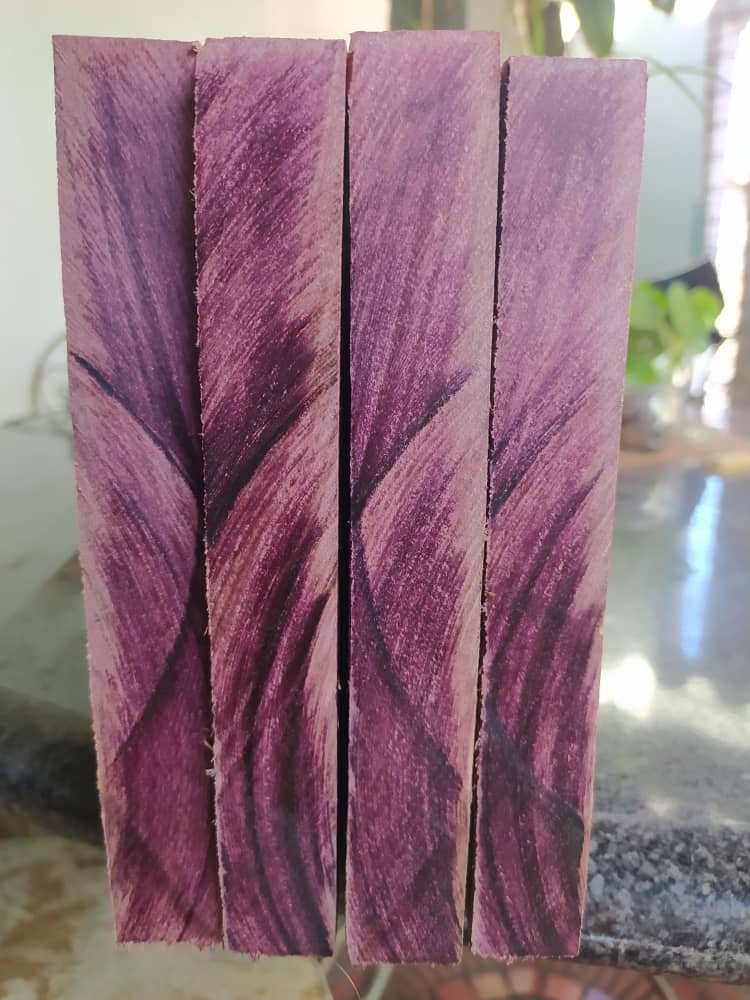
A cross-section of Peltogyne (purpleheart wood). Note the pale colour in some areas where oxidation isn't complete.
The point being, that's a difficult thing to get around there. So, once I had the chance to get some there was the idea of a trade. This is an expensive wood. It's applications in luthierie are many from fretboards, inlays, rosettes, ornaments and else. Of course, its hue is one of the things that make it attractive. It is very dense and something made out of this wood can last practically forever.
This particular purpleheart plank was cut in 50cm-long pieces. So, I sent two of them to my friend and this is a peek of what I received in exchange.

As a funny way to recycle material, the wood came back in the same cardboard I used to sent the planks
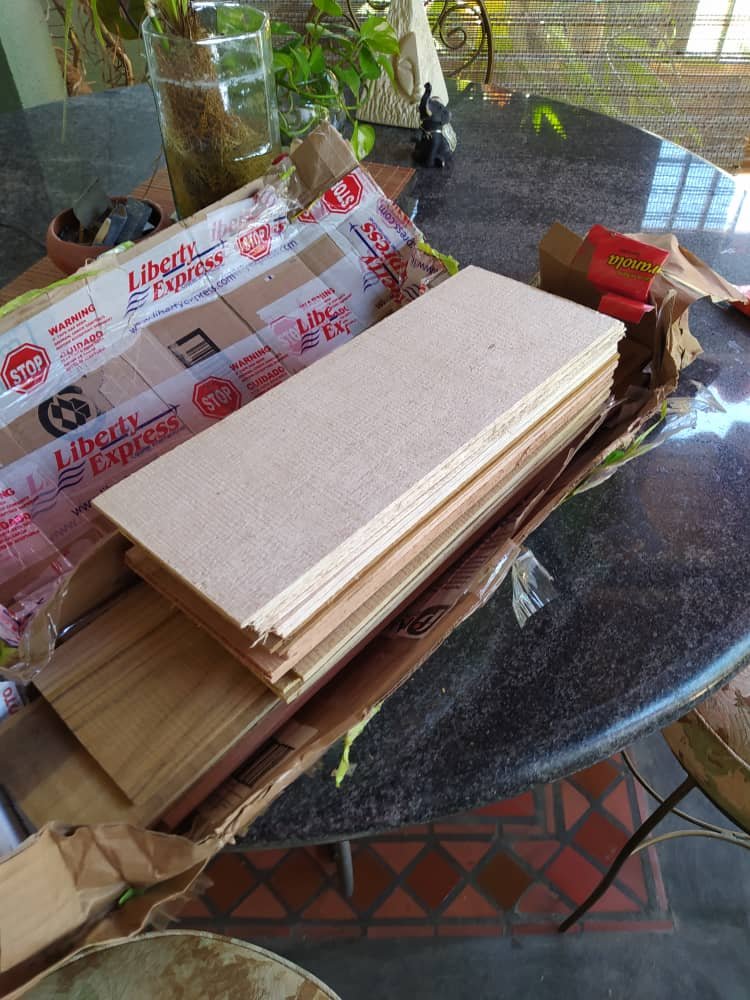
Looking good
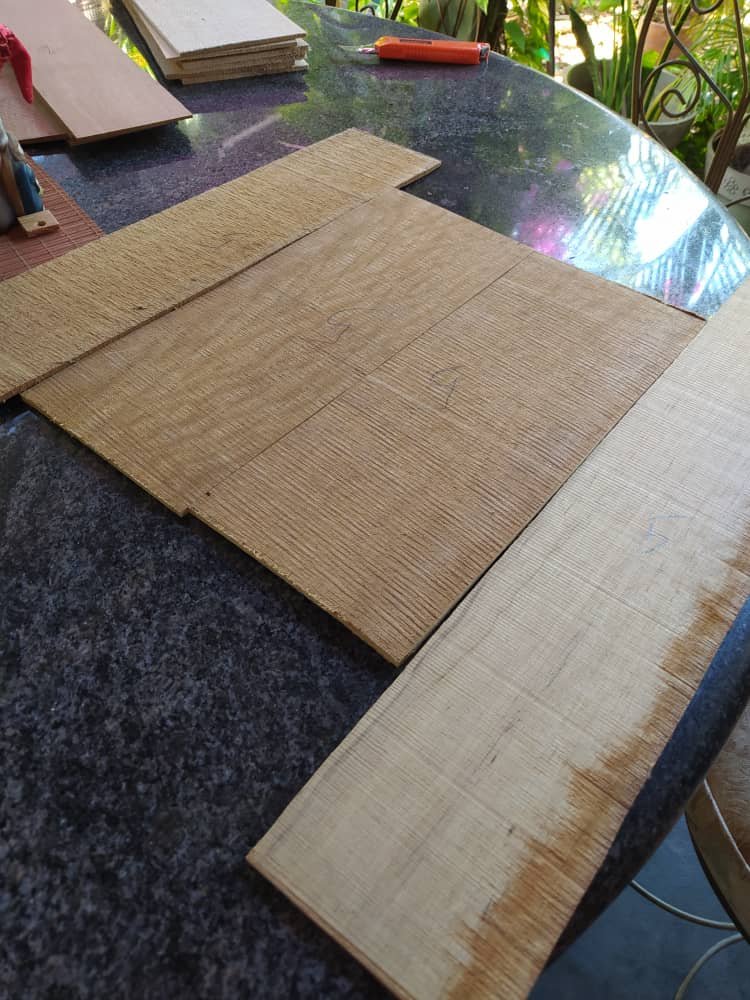
Nectandra lanceolata of the yellow kind
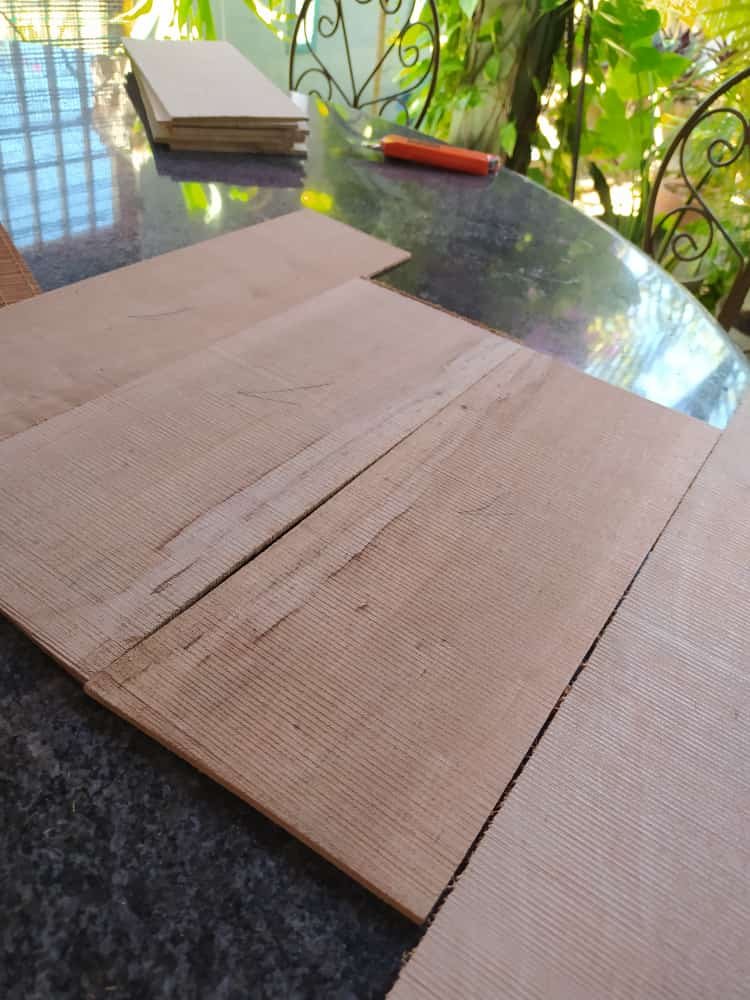
Nectandra lanceolata of the pinkish kind
There are two sets of this wood. Nectandra lanceolata is a coveted wood in the process of making paper and woodworking projects in general. As a species, the tree is recommended for the recovery of forests and other green areas. It would be interesting to see if some of these could find its way into the only park in town. The end product of the yellow one is mind-blowing. Stay tuned for the time when I get to make an instrument with it. The pinkish kind looks similar to Cedrala's hue. No doubt it will make a beautiful instrument if combined with the correct colours.
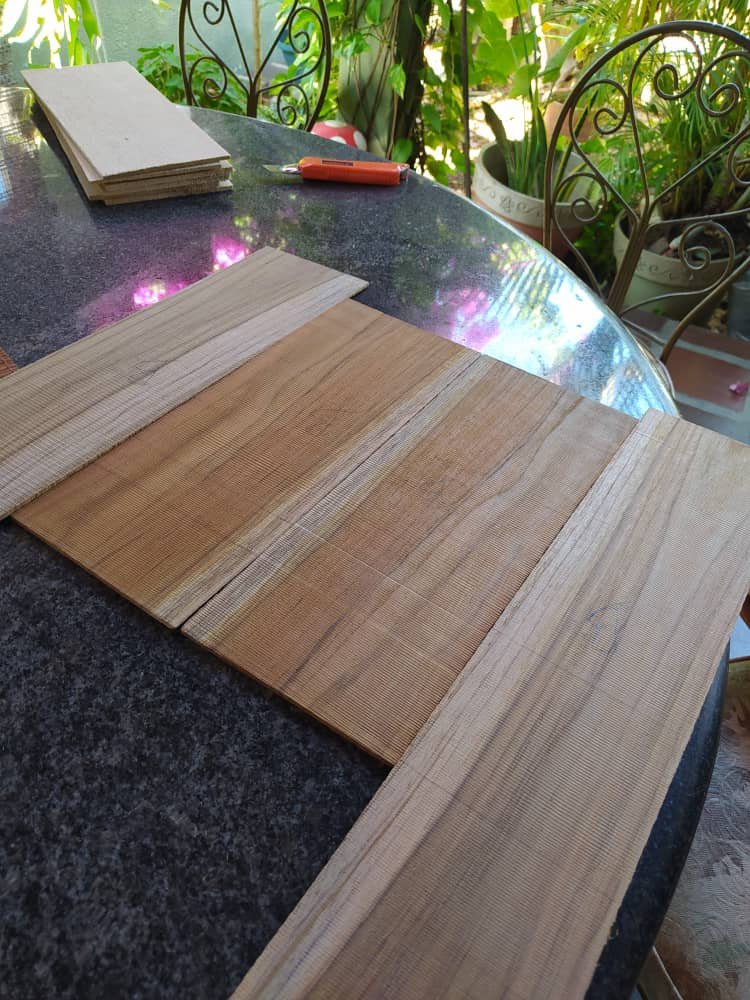
This is the grain of Venezuelan Teak
Teak (Tectona grandis) is a foreign species of wood that was brought to Venezuela from India. To everyone's surprise the tropical weather gave our teak a beautiful grain. Talk about sun making wonders. This wood is in the range of semi-hard wood. It is most commonly known because teak oil is extracted from it. In the Venezuelan Plains (and this I know because my friend told me), it is used as firewood. That's absolutely crazy! However, it is so because it's an abundant species of wood. I hope they are saving the best looking kinds to make instruments. This wood resists fungi, cracking, has great stability and can even withstand some acids. So, its uses exceed the ones of any wood I have worked previously.
All these woods are paired this way because they are kits. In luthierie, wood kits refer the back and sides of the instruments. These are usually matched for aesthetics.
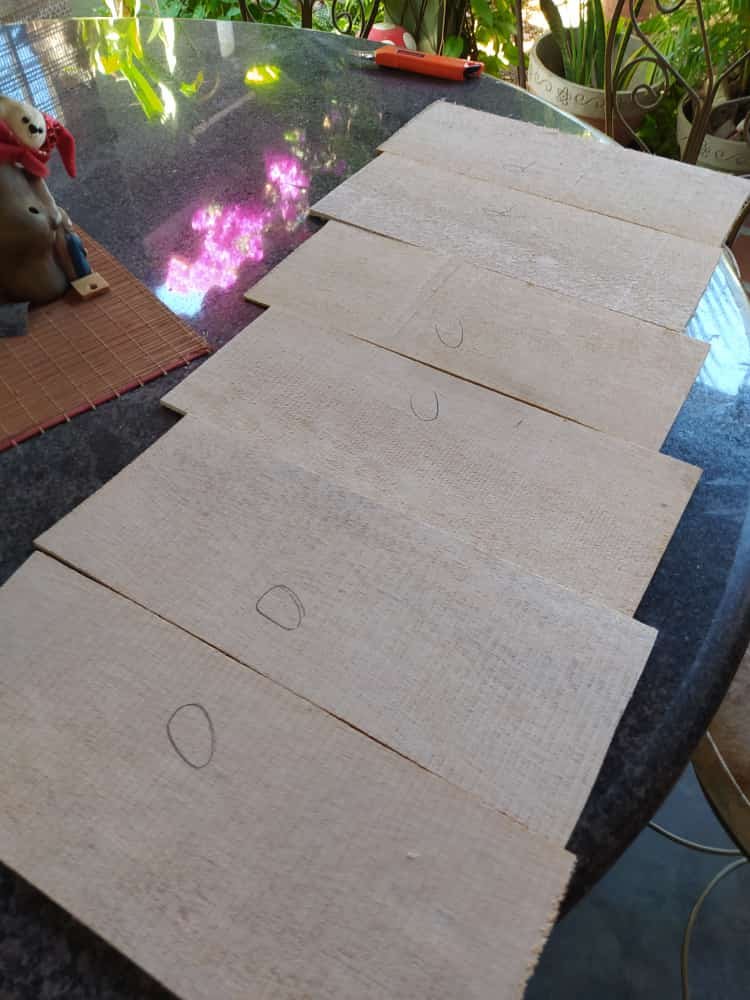
As an update to this post, I found the species of this wood! It's called Simarouba Amara
It is called Flor Azul (the tree grows "blue flowers" hence the name). It is an interesting and cheap choice for sound boards that provides a round and warm sound. I still haven't made an instrument using this. However, I can tell the results will be amazing by virtue of some tapping tests.
I'm eager to use these for my new builds. But I'll save them since my First Run is almost at its end. Those are also great news. Venezuelan Cuatro #8 is already a commission. That leaves 9 and 10 to close up the round. There's some good stuff for those last 2 since I'm trying to make more expensive instruments to close the series with style.
Stay tuned for the updates!

Hey @bertrayo
That looks like you have your weekend all cut out for you. Nice selection of wood there. Can't believe people burn teak as fire wood there, I would lose my sh*t if I saw that happening, it's like sacrilege.
Purple heart is beautiful but I remember being told by a guy at Rare Woods that it's not a very nice wood to work with - he had built up some kind of irritation to it so he had to stop handling it. Have you ever had a response like that to it?
I've personally never worked with it because it's really expensive here.
I'm keen to see what you make with all these planks, should keep you busy for a few weekends
Have a good one
Ha, ha, ha. I think it's something that happens because of its abundance. Also, since Teak has a lot of oils, it makes for great kindling as it repels water. But I get the point, I believe some people keep the best pieces to make nice things.
Oh, yeah, purpleheart has some level of toxicity, but as long as you keep your eyes and nostrils protected all will be fine.
You and me both! It's gonna be some busy weekends!
Have a great weekend!
Hey there, thanks for the reply.
Hmmm, reading that actually makes me feel kind of uncomfortable. I simply can't deal with the idea of people burning good wood!
I'll tell you a similar story from my late father. He used to go to Rare Woods relatively often and they have a warehouse that sits adjacent to the main shop. This warehouse is basically a big store room of offcuts. Lots and lots of offcuts of different wood. I love wood and I've used a few different types for various DIY projects through the years.
He was there trawling through the wood trying to find some ebony for a set of handles that he had to make on the lathe, but what he found instead was actually even better. African BlackWood. This stuff is as tough as nails and f00king expensive. Beautiful to work with for carving because of it's density but it's also known to completely wreck normal carving tools and you kind of need to use industrial tools on this stuff. Anyway there were bags of offcuts that the guy there had discarded as worthy of firewood as they were too small for anything substantial. Needless to say I have a few nice pieces of African Blackwood that I'm keeping for something special. I would imagine that it would be great for inlays. If you cut it with a jewellers saw, you have to use the cutting blades made for steel. Have you ever used it in a project?
This is from the Rare Woods website - it's apparently very popular in guitar making.
"SPECIES DESCRIPTION
Without question, the densest and most un-rosewood-like of the Dalbergia’s (for our money, at least!), African Blackwood is a consistent favorite with acoustic guitar luthiers, wood turners, carvers and fine furniture craftsmen, alike; it remains one of the world’s most coveted musical woods. African Blackwood often appears almost completely black, with its grains hardly discernible. (… thus the name. After sanding, a deep, very dark chocolate color emerges.)"
So there's my rambling addition to your weekend woodworking post 🙂
Hey, I love to engage with fellows DIYers.
I can't say much about things like that. I mean a lot of good wood goes to waste every year for many reasons. But I don't like the teak-kindling situation one bit. It should be up to the regional government to do something about it.
I see. Once someone sent me a picture of a 5$ section of exotic woods offcuts. It was interesting to see how many things end on those sections that can be use for carving and instruments in general.
The story is lovely. Also one of those Colombus-like cases, he went looking for copper and found gold. I guess the wood was cheap since it was in that place. Most hard woods are a pain to work, the ones that have other particles inside, something that's also found in sand. That's why the dull edges so quick. About that African Blackwood it is interesting how it is a part of the Dalbergia Family. So it is a darker version of any Rosewood. And for the looks of it a very interesting one to work some things. I bet many Ebony things are actually this wood since Ebony is so scarce. I have never used something similar. Don't think people actually import that kind of wood here.
Ha, ha, ha. "For our money," that killed me! It's an interesting choice to say the least. I also think it is cheaper than Ebony and as expensive as Rosewood. But I don't know. Materials for instruments are quite expensive when they are cut to shape.
One good rambling deserves another! 😄